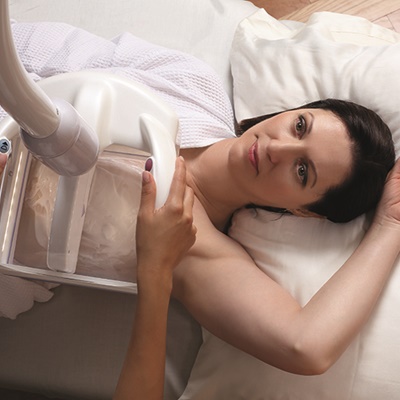Breast MRI
MRI uses magnetic field and computer generated radio waves to create detailed images of the breast. Breast MRI produces hundreds of images of the breast, cross-sectional in all three directions (side-to-side, top-to-bottom and front-to-back). Breast MRI is a supplemental tool that offers valuable information about many breast conditions that cannot be obtained by other imaging modalities, such as mammography or ultrasound.

Breast Ultrasound
Ultrasound, also called sonography, uses sound waves to make detailed pictures of the breast. In addition to a traditional ultrasound, we also offer Automated Breast Ultrasound (ABUS) which is recommended for women with dense breasts. Both methods of breast ultrasound are supplemental screening exams used in addition to mammography or to evaluate an abnormality detected in mammography.
Breast Biopsy
If an abnormality is found during a breast screening, your doctor may order a biopsy to further evaluate this area and determine if it is breast cancer. A breast biopsy is a procedure to remove a sample of breast tissue for laboratory testing. There are several types of breast biopsy procedures and the results can confirm whether the area of concern is breast cancer and help determine whether you need additional surgery or other treatment.
After a breast biopsy is completed, the tissue samples will be sent to a lab where a pathologist will examine the sample under a microscope. The pathology report will include details about the tissue sample, including a description as to if cancerous, precancerous or noncancerous cells were found. Depending on your results, your doctor and their colleagues will help develop a plan for the next steps.